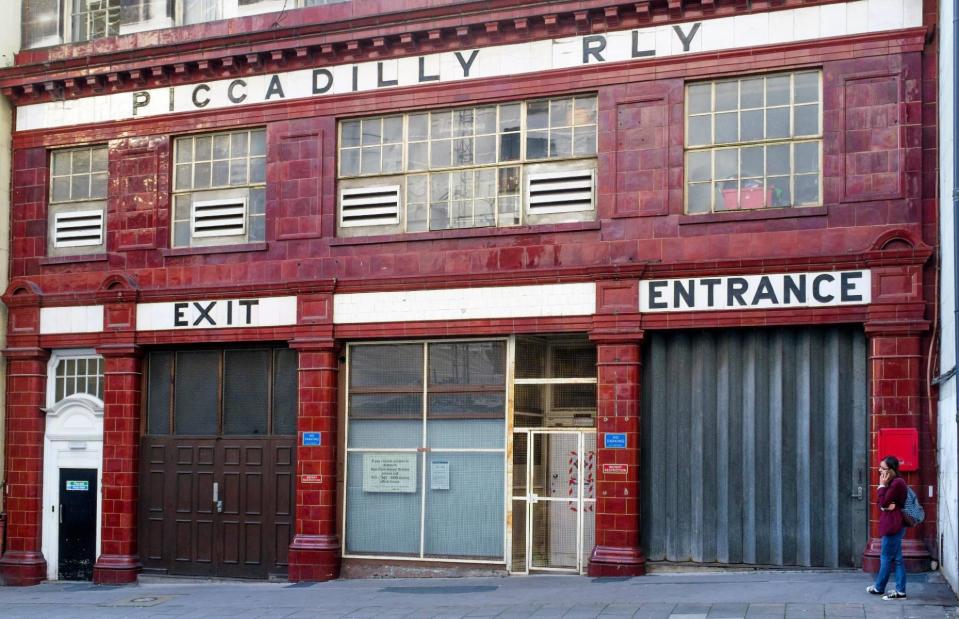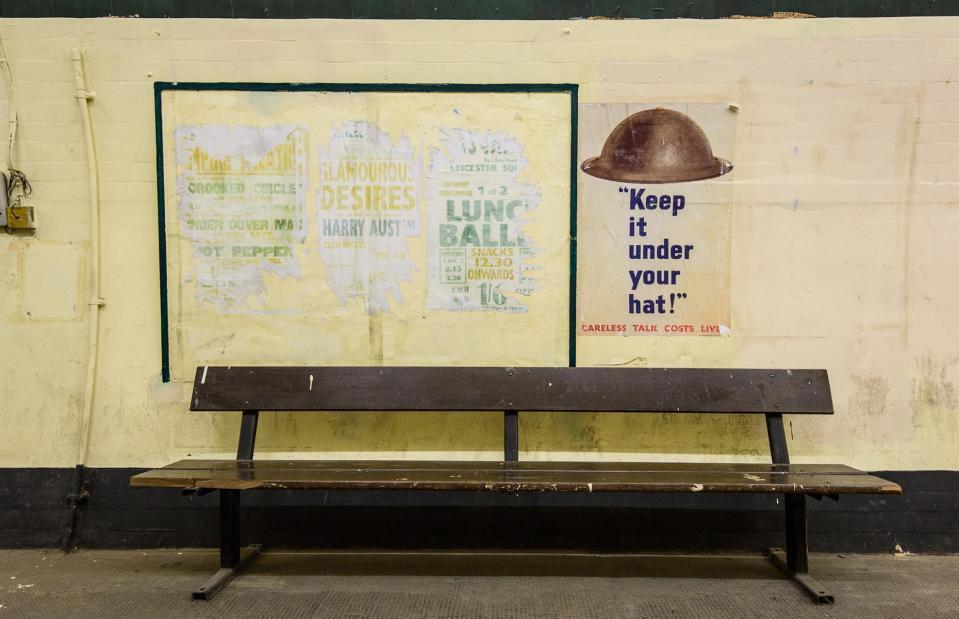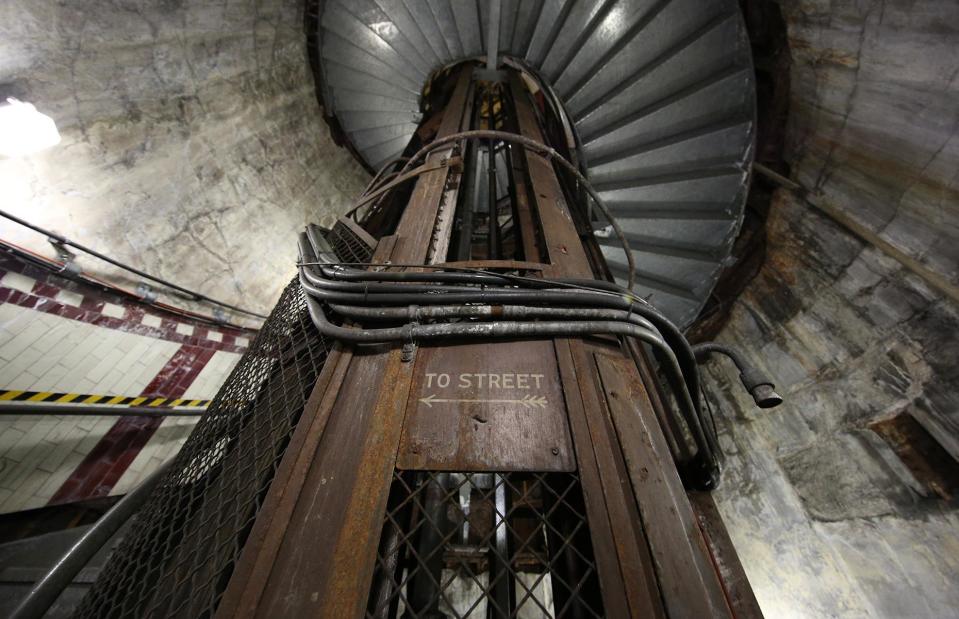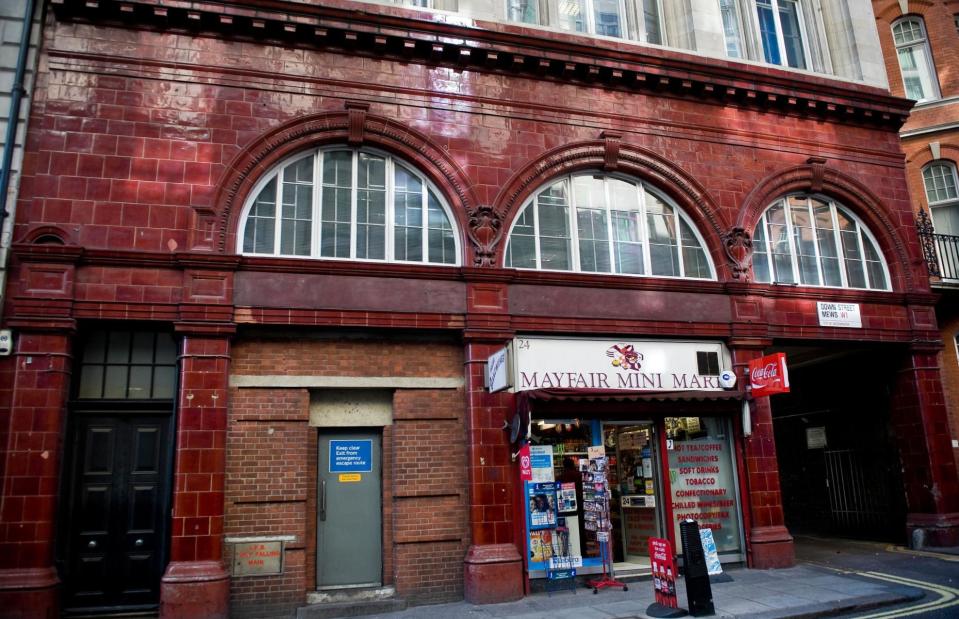Eerie abandoned underground stations the world forgot
Stopped in their tracks

Felix Lipo/Shutterstock
Hidden deep beneath the city streets, these abandoned, disused and forgotten subway stations are a fascinating window to the past. Some have been transformed into museums or used as film sets, while others slowly slip into oblivion.
Take a look at these incredible abandoned stations and learn the captivating stories behind them...
Disused tunnels at Euston, London, UK

Nick Harrison/Alamy Stock Photo
Although Euston is one of London’s busiest stations – linking several tube, overground and rail lines – there’s a whole system of disused tunnels hiding underground that not many people know about.
Disused tunnels at Euston, London, UK

Nick Harrison/Alamy Stock Photo
When the mainline station was rebuilt in the 1960s along with the then-new Victoria line, the old connecting passageways, some of the tunnels and ticket hall became redundant. Keen to explore the tunnels? The London Transport Museum runs guided tours.
Porte des Lilas, Paris, France

THOMAS SAMSON/AFP/GettyImages
Part of Paris' Porte des Lilas station closed in 1929, but it's been a popular filming location since the 1970s. It was last open to the public in 2017, during European Heritage Days, when visitors could tour the platforms and see the restored subway cars.
Porte des Lilas, Paris, France

THOMAS SAMSON/AFP/Getty Images
Part of the station still remains operational and the disused platforms have appeared in films like Amélie and Julie & Julia. During shoots, producers are free to change all of the décor and even the name of the station. But it doesn't come cheap – €20,000 (£16,614/$20,816) a day, including a train and staff.
Aldwych, London, UK

Mark Phillips/Alamy Stock Photo
One of London’s most famous ghost stations, Aldwych tube station was part of a spur on the Piccadilly line and closed in 1994. The crimson-tiled entrance is still visible from the Strand and, below street level, the original lobby, wooden-panelled lifts and vintage posters are preserved.
Aldwych, London, UK

Andrew Stawarz/Flickr/CC BY-ND 2.0
So why was it closed? When today's Piccadilly Line (then known as the Great Northern, Piccadilly and Brompton Railway) was formed out of a merger of two different tube lines, Aldwych became just an isolated offshoot of the new line. Footfall declined and Aldwych shut for good in 1994.
The station is also a popular filming location, appearing in movies like V for Vendetta, 28 Weeks Later and Darkest Hour. The London Transport Museum runs guided tours.
Down Street, London, UK

Peter Macdiarmid/Getty Images
This central London station, located on the Piccadilly line, was only in operation for 25 years. Located in Mayfair, between Dover Street (now called Green Park) and Hyde Park Corner, it was little-used and trains often passed through without stopping.
Down Street, London, UK

Steve Speller/Alamy Stock Photo
Part of Down Street's red terracotta tile façade is still visible from street level. The London Transport Museum runs tours, with guides happily pointing out where Prime Minister Winston Churchill secretly took refuge at the height of the Blitz.
Cincinnati subway, USA

Associated Press/Alamy Stock Photo
As downtown congestion increased rapidly in the first quarter of the 20th century, the construction of the Cincinnati Subway began in the early 1900s. However, escalating costs, the collapse of funding due to political uncertainty and the Great Depression meant that the project was subsequently abandoned. Here we see an abandoned surface loading station on Hopple Street in the west of the city.
Cincinnati subway, USA

Jonathan Warren/Wikimedia Commons/CC BY-SA 3.0
In 1928, it was cancelled altogether and there have been no plans to revive it since. Today it is the largest abandoned subway tunnel system in the United States.
Mail Rail, London, UK

John Bingham/Alamy Stock Photo
Unknown to most commuters using the London Underground system, there’s a line running between Paddington Station and Whitechapel, but it’s not meant for people. The Post Office Railway, also known as Mail Rail, helped mail travel between the two sorting offices.
Mail Rail, London, UK

RichardBaker/Alamy Stock Photo
The Post Office Railway operated from 1927 to 2003 and ran from Paddington Head District Sorting Office in the west to the Eastern Office at Whitechapel in the east. Here we see a postal worker loading mail in 1993, 10 years before the service was finally shut down. A museum opened in 2017, allowing visitors to ride the Mail Rail carriages through the narrow tunnels.
Old Los Angeles subway system, USA

same credit/Shutterstock
Did you know that the current Los Angeles subway system isn’t the first one the city has ever had? The original Subway Terminal Building, now known as Metro 417, was the Red Car subway terminal and served more than 65,000 commuters during the 1940s.
Old Los Angeles subway system, USA

archival/Alamy Stock Photo
Here we see an abandoned electricity station that once powered the subway. Below the surface, the tracks, platforms and even the signage of the Red Car subway system are still intact, but remain off limits to visitors.
Antwerp Premetro, Belgium

Luuk de Kok/Shutterstock
Constructed in the 1980s, Antwerp’s subterranean tunnels were supposed to be served by trams, which would later be upgraded to a full rapid transit system.
Antwerp Premetro, Belgium

Kristoff Bellens/Shutterstock
Although much of Antwerp’s Premetro still runs today, tunnels connecting the city centre with the eastern suburbs were never finished due to a lack of funding.
Chambers Street, New York City, USA

Dimple Patel/Alamy Stock Photo
First opened in 1913, the Chambers Street subway station has been through a series of changes. It's now a part of the Brooklyn Bridge-City Hall/Chambers Street station complex, and only two platforms remain – a surviving east-side wall platform and a destroyed west-side platform.
Chambers Street, New York City, USA

Richard B. Levine/SIPA USA/PA Images
One of the platforms that faces the old Chambers Street platform is still in use by the downtown J & M trains on weekdays. This gives photographers the perfect opportunity to snap the abandoned platform opposite.
Waldorf Astoria, New York City, USA

Felix Lipov/Alamy Stock Photo
Commissioned by the 32nd US President, Franklin D. Roosevelt, this station, hidden below the Waldorf Astoria hotel, was never intended to be open to the public.
Waldorf Astoria, New York City, USA

Felix Lipov/Alamy Stock Photo
An extension of Grand Central Station, it was built to help Roosevelt keep his polio diagnosis private while commuting between New York and Washington DC. The private train car Roosevelt travelled in is now housed in the Danbury Railway Museum in Connecticut. This carriage, still in situ, was used to transport his specially designed armoured Pierce-Arrow limousine.
Lower Bay, Toronto, Canada

kylauf/Shutterstock
Hiding below the Bay station main platform is an abandoned platform that was only in use for six months in 1966. The platform was part of a failed interlining experiment.
Lower Bay, Toronto, Canada

picturelibrary/Alamy Stock Photo
Much of the infrastructure is still present and, although the platform isn’t usually accessible, it has been open to the public on various events, including Doors Open Toronto in 2007, 2013 and 2018.
Rumsey Station, Hong Kong

Hokachung/Wikimedia Commons/CC BY 3.0
Part of Sheung Wan station, the Rumsey Station platforms were constructed in the 1970s as the southern terminus of the East Kowloon Line. However, the plans changed mid-project. While the platforms were finished, the tracks were never laid so they have never been used.
Rumsey Station, Hong Kong

Wikimedia/ CC BY-SA 2.5
Today, they serve as a passageway between the concourse and the open platforms, near Exit E.
City Hall, New York City, USA

Felix Lipo/Shutterstock
Arguably one of the world’s most famous ghost stations, New York City’s City Hall station is exceptionally beautiful with brass chandeliers, coloured glass tile work, and skylights.
City Hall, New York City, USA

Felix Lipo/Shutterstock
The station opened in 1904 as part of the IRT Lexington Avenue Line, but was subsequently closed in 1945 due to short platforms. The New York Transit Museum runs regular tours of the station but such is the demand that you need to register your interest on the museum's website to have a chance of getting a spot.
Canal Street, New York City, USA

Derek Brown/Alamy Stock Photo
Opened in 1907, Canal Street station originally had four platforms, but right from the beginning only one was used. Then, in 1914, a rearrangement meant that its two central tracks ended inside the station, while the northbound track was moved to the south.
Canal Street, New York City, USA

Wikimedia/CC BY-SA 4.0
The station closed for good in 2004, after its northbound platform was taken out of service. Today, its entrances have been completely closed off, with decaying paintwork and graffiti telling tales of decades of neglect.
Estación de Chamberí, Madrid, Spain

DCarreño/Alamy Stock Photo
One of Madrid’s original eight metro stops and opened in 1919, Estación de Chamberí was closed in 1966. Unfortunately, the station was no longer able to accommodate larger, more modern trains.
Estación de Chamberí, Madrid, Spain

David Herraez Calzada/Shutterstock
It was inspired by the look of the Parisian stations at the time, and a lot of its original features have been preserved, including posters, benches and even turnstiles. In 2008, it reopened as a museum with many period features restored to offer a realistic portrayal of life in the 1920s. The museum offers free guided tours which can be booked online.
Caojiawan Metro Station, Chongqing, China

Imaginechina Limited/Alamy Stock Photo
Akin to a scene from an apocalyptic movie, Caojiawan Metro Station is eerily haunting. Located close to Chongqing in China, the station was built in 2015 to connect the rural suburb of Caijiagang with the city centre.
Caojiawan Metro Station, Chongqing, China

Imaginechina Limited/Alamy Stock Photo
The station has three exits, but only one of them is in use. The others are slowly being overtaken by Mother Nature. No residential buildings, roads or shops can be found anywhere near the station, and the barren surrounding land only adds to the mysterious feels this station gives off.
Read on for the world's most extraordinary abandoned underground megaprojects...


